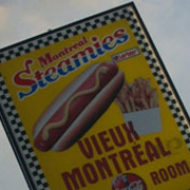MUNACA, McGill’s union of non-academic professionals, went on strike yesterday at 6am. MUNACA members do a great deal of the work that keeps the university running. Our department has three MUNACA staff, and I depend mightily upon them as a faculty member. In my time as grad director and then chair, I got to know them even better. They work as hard as faculty, the hours are often as long, and mostly they do things so we and our students can walk around leading the life of the mind. For this, they are paid considerably less than faculty, but also less than their other counterparts are major Montréal universities.
To my knowledge, this is the first major strike by that union at McGill; no doubt it is fuelled by their affiliation with the Public Service Alliance of Canada (PSAC).
Today’s Montreal Gazette has a story summarizing some of the issues, “balanced” by some whining by people who don’t like being inconvenienced. In fairness to the people quoted, the McGill Association of University Teachers (an entity which claims to represent professors on campus but appears to have no real power or existence separate from university administration) also has a somewhat childish “this is a bad time for a strike” clause in their official position statement, which I excerpt here:
A strike at this time would heavily impact students returning to classes, departments attempting to mount classes and to administer programs without a full contingent of support staff, and faculty who must teach classes without necessary administrative support. MAUT would like to bring attention to the special difficulties faced by researchers who are entering the granting season, whose success may be diminished by the absence of administrative support. Further, the interruptions to timely ordering and delivery of research materials and supplies from suppliers will heavily impact the training of graduate students. Even worse, the potential, irrevocable loss of critical animal models for many researchers will be catastrophic. Their research success is the key to McGill’s excellence, and it should be kept in mind that submissions to granting agencies represent team efforts, with administrative staff playing indispensable roles in preparing grant proposals.
That seems like some faulty logic. If MUNACA staff are so critical, maybe they deserve some of the things they are asking for?
Anyway, if professors think that the strike is about them, or their research, or their feelings, I fear they are sorely deluded.
—
You can read up on the strike on MUNACA’s site and around the web. If you feel motivated to write a letter of support, send it to our principal, Heather Munroe-Blum.
Other things you can do:
–> join the picket line
–> bring nice pastries or other snacks to the picket line (maybe not from union-busting Tim Horton’s, though)
–> educate your friends and colleagues about the strike
–> meet with other like-minded people and dream up more substantive strategies to support the MUNACA workers until the strike is resolved
My letter to the principal and provost is reproduced below, lightly edited:
—
Dear Heather and Tony,
I am writing to ask that you do everything in your power to come to a quick settlement with MUNACA. I am aware of the administration’s official position on the matter and have read the official communiques, along with MUNACA’s.
In three years as chair of the department of Art History and Communication Studies, I got to know my MUNACA staff very well. They work as hard as many faculty, and always went the extra mile to look after students or the department. They are totally dedicated, and totally essential to the running of the university.
But since 2007 I have seen all sorts of staff benefits erode, from summer Fridays, to the changes in the pensions, to replacements for staff who leave (effectively increasing the workload of the remaining staff). I read what Michael Di Grappa said about compensation packages, but the salaries are low compared to other schools and I tend to think it has something to do with assumptions about the local market for Anglophone office workers (though many MUNACA employees are bilingual, Francophone or Allophone). To this I would only add that MUNACA staff do not always feel particularly valued by the university, and a show of good faith now would go a long way in that respect.
I know we’re in a huge financial crunch, but surely the savings from squeezing support staff can’t be that much in the grand scheme of things.
We could and should do better. I hope that you will.
Sincerely,
–Jonathan
PS — As always, if there is a role I can play in helping the university support its support staff, please don’t hesitate to call on me.
